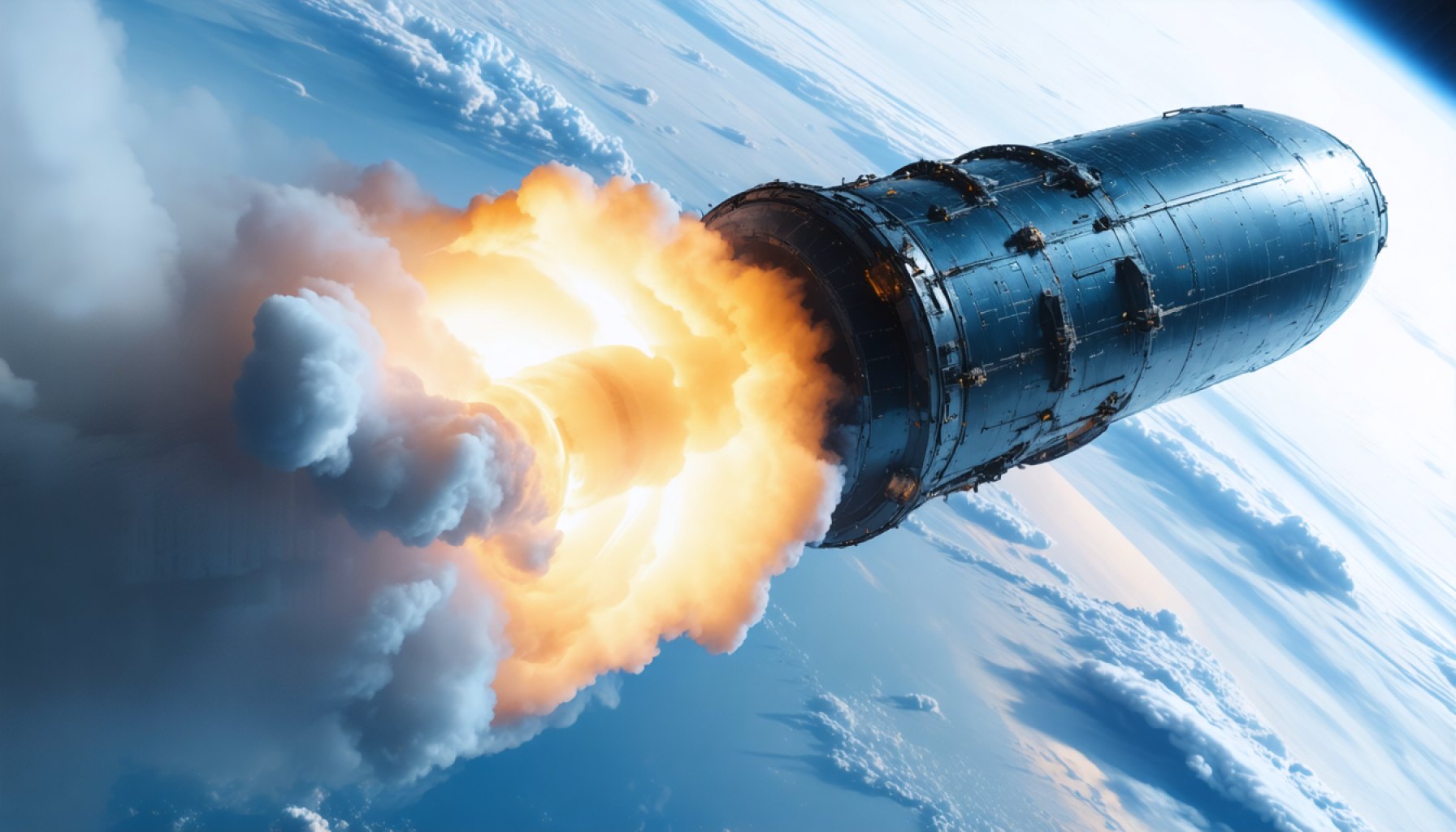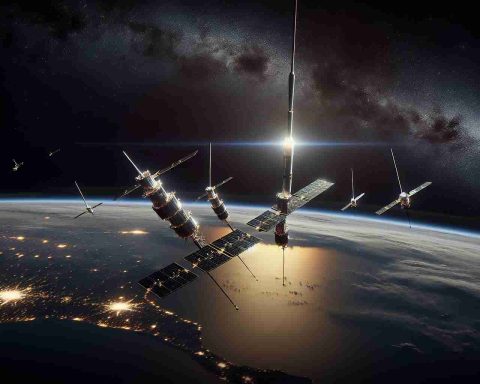- Pulsar Fusion is developing Sunbird, a nuclear fusion propulsion system for space travel, with support from the UK Space Agency.
- Sunbird aims to reduce travel time to Mars by harnessing nuclear fusion, which merges hydrogen nuclei, unlike fission in current nuclear plants.
- Operating in space eliminates atmospheric challenges of fusion, allowing efficient propulsion and speeds over 500,000 mph.
- Sunbird plans to use helium-3 for ‘nuclear exhaust’, enabling efficient solar system travel despite high fuel costs.
- A test launch this year is part of a multi-year effort aiming for operational fusion travel by 2027, requiring around $70 million per prototype.
- The project promises to revolutionize space exploration, offering faster, cleaner propulsion and new possibilities for interplanetary travel.
Imagine harnessing the power of the stars — on a rocket piercing through the vast expanse of space, fueled by a propulsion system capable of unimaginable speeds. That vision is edging closer to reality thanks to British startup Pulsar Fusion. With backing from the UK Space Agency, they are diligently crafting Sunbird, a groundbreaking concept poised to potentially halve travel time to Mars and redefine our perspective on interplanetary travel.
Pulsar Fusion’s Sunbird embraces nuclear fusion–the very process that lights up the cosmos. Unlike the familiar fission used in today’s nuclear plants, which splits atoms to release energy, fusion merges hydrogen nuclei under immense pressure and heat, mirroring the conditions at the heart of a star. This celestial comparison isn’t whimsical; it’s the blueprint for unlocking energy levels that far exceed fission, without the radioactive waste that plagues fission reactions.
What sets Sunbird apart is its out-of-this-world environment — quite literally. Fusion on Earth wrestles with atmospheric challenges, needing energy-intensive conditions to initiate and sustain, and it has yet to produce net energy. But in the vacuum of space, fusion processes don’t fight the struggle they face within terrestrial confinements. Enter fusion-powered rockets, where nuclear reactions don’t just power engines like electricity on Earth, but instead propel them forward through space with unimaginable force.
Sunbird’s ambition is grand: powering spacecraft to speeds exceeding 500,000 miles per hour, leaving even NASA’s Parker Solar Probe, the fastest human-made object to date, in its rear-view mirror. By using helium-3 to produce protons instead of neutrons, Sunbird creates a ‘nuclear exhaust’, a novel propulsion mechanism. This type of fuel is more costly but offers the priceless ability to traverse the solar system with unprecedented efficiency.
Richard Dinan, Pulsar Fusion’s CEO, envisions a future where fusion rockets will behave like a fleet of bikes at docking stations in low Earth orbit and beyond. Spacecraft will rendezvous with them, switching off their traditional engines to supercharge their voyage using nuclear fusion — a cosmic refuel for the next leap to distant worlds.
This year marks a pivotal step with the test launch of key components designed to prove Sunbird’s potential. Minute details like these are incremental in a journey slated to scale greater heights by 2027 — a debut of fusion in the vacuum of space. The stakes are steep, with a prototype costing about $70 million, but such investments promise transformative returns. The real triumph will be witnessing Sunbird in full spirit, catapulting satellites into position, and blazing trails to Jupiter and beyond.
As Sunbird moves towards operational reality, the anticipation isn’t just about traversing great distances quickly. It’s a shift in our capabilities — a testament to human innovation harnessing the cosmic dance of atoms as the next frontier of exploration. The dream of near-perpetual clean energy and propulsion isn’t just a vision of tomorrow; it’s being accelerated by every bold step taken today towards a universe powered by the stars.
Pioneering the Future of Space Travel: Unlocking the Power of Nuclear Fusion for Rocket Propulsion
Overview of Pulsar Fusion’s Sunbird Project
Pulsar Fusion, a promising startup, is paving the way for revolutionary advancements in space travel. Their Sunbird project aims to utilize nuclear fusion, the same process powering stars, as a new propulsion mechanism for rockets. Supported by the UK Space Agency, this endeavor promises to dramatically reduce travel times to distant planets like Mars, heralding a new era of interplanetary travel.
Understanding Fusion Technology
– Fusion vs. Fission: Unlike nuclear fission, which is currently used in power plants and involves splitting atoms to release energy, nuclear fusion merges hydrogen nuclei. This process occurs under extreme heat and pressure, producing energy far superior to fission without the hazardous radioactive waste.
– Helium-3 as Fuel: Sunbird’s propulsion utilizes helium-3, which is more expensive than traditional fuels but generates protons instead of neutrons. This minimizes the risk of radioactive contamination and facilitates efficient space travel.
Advantages of Fusion Propulsion in Space
– Efficiency in Space’s Vacuum: On Earth, maintaining fusion reactions demands energy-intensive conditions. However, in the vacuum of space, these conditions can be more easily achieved, allowing for more effective and sustained fusion reactions.
– Speed and Capacity: Pulsar Fusion’s technology could elevate spacecraft to speeds exceeding 500,000 miles per hour. This is substantially faster than NASA’s Parker Solar Probe, the current fastest man-made object.
– Sustainability: Fusion propulsion promises a nearly limitless and clean energy source for prolonged space missions, potentially sparking a new wave of space exploration.
Frequently Asked Questions
How does Sunbird differ from current propulsion systems?
Sunbird utilizes a unique form of nuclear propulsion. Instead of traditional chemical rockets, Sunbird’s fusion-based system produces a ‘nuclear exhaust’, propelling spacecraft forward more efficiently and at significantly higher speeds.
What are the potential setbacks or limitations?
Key challenges include the high cost of developing a fusion-based rocket system, which currently stands at around $70 million for a prototype. Additionally, the success of fusion technology depends on overcoming technical hurdles in sustaining controlled reactions.
Future Prospects and Industry Impacts
– Market Forecast and Trends: The fusion propulsion market could potentially reshape the aerospace industry, opening new avenues for space travel, satellite deployment, and exploration beyond the solar system by 2030.
– Collaborative Opportunities: As fusion technology matures, collaboration with space agencies and private companies could lead to shared advancements, making space travel more accessible and cost-effective.
– Potential Controversies: Despite its promise, nuclear fusion faces skepticism due to the historical challenges of achieving practical application. Regulatory and safety concerns will be paramount as technology is further developed.
Actionable Recommendations
1. Investment Opportunities: Consider investing in companies pioneering fusion technology, as early investments could yield substantial returns as the market grows.
2. Educational Pursuits: For those interested in space and engineering careers, specializing in nuclear or aerospace engineering could position individuals at the forefront of this transformative industry.
3. Staying Informed: Regularly follow developments in fusion technology and related space exploration initiatives to understand potential implications and opportunities.
Conclusion
Sunbird represents a leap toward realizing the dream of quick, efficient interplanetary travel. As the project advances, it promises a transformative impact on both the technological landscape and humanity’s approach to exploring the final frontier.
For more on cutting-edge space advancements, visit NASA and ESA websites for further insights and updates on ongoing projects and breakthroughs.










